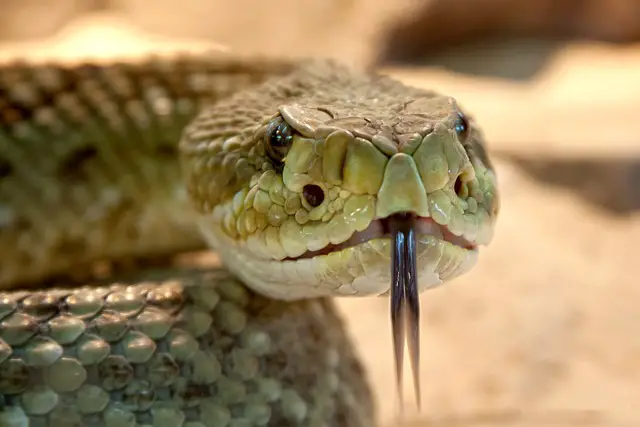Snakes are known for their predatory nature and ability to swallow their prey whole. On the other hand, tortoises are known for their hard shells and slow movements. It is natural to wonder whether snakes would eat tortoises or if their shells would provide adequate protection.
While there are many species of snakes and tortoises, it is generally not common for snakes to prey on tortoises.
Tortoises have a hard exterior shell that can be difficult for snakes to penetrate, making them less desirable prey.
Tortoises are often too large for snakes to swallow whole, which is how they consume their prey. However, some species of snakes have been known to eat tortoises, such as the African rock python, which can consume large prey due to its size and strength.
While it is not common for snakes to eat tortoises, it is still possible in some cases. It is important to remember that snakes and tortoises play essential roles in their respective ecosystems and should be respected and protected.
Do Snakes Eat Tortoises?
Types of Snakes That Eat Tortoises
Some species of snakes are known to eat tortoises. These include the African rock python, the Burmese python, the Indian python, and the boa constrictor.
These snakes are all constrictors, which means they wrap their bodies around their prey and squeeze until it suffocates.
How Do Snakes Catch and Eat Tortoises?
Snakes that eat tortoises usually catch them by surprise. They may wait for the tortoise to come out of its shell to bask in the sun, or they may ambush it as it walks by.
Once the snake has the tortoise in its grasp, it will wrap its body around it and squeeze until it suffocates. The snake will then swallow the tortoise whole, head first.
What Happens After a Snake Eats a Tortoise?
After a snake eats a tortoise, digesting its meal will take some time. The tortoise’s shell is hard and challenging to digest, so the snake must break it down. To do this, it will use its powerful stomach acids to dissolve the shell.
This process can take several days or even weeks, depending on the tortoise’s and the snake’s size.
In conclusion, some species of snakes do eat tortoises, and they do so by constricting them and swallowing them whole. After eating a tortoise, the snake must digest its meal, which can take some time.
Prey-Predator Relationships
Tortoises as Prey
Tortoises are slow-moving creatures often preyed upon by predators, including snakes. While some species of tortoise have developed protective shells to defend themselves against predators, they are not always successful in deterring predators.
Snakes are one of the most common predators of tortoises. They prey on tortoises of all sizes, from hatchlings to adults.
Snakes have a unique ability to swallow their prey whole, meaning they can consume much larger tortoises than their own body size.
Snakes as Predators
Snakes are known to be opportunistic predators that feed on a variety of prey, including tortoises. Snakes have several adaptations that make them effective predators, including their ability to swallow prey whole and their flexible jaws, which allow them to consume prey much larger than their body size.
Some species of snakes, such as the African rock python, specialize in feeding on tortoises. These snakes have strong jaws and muscular bodies, allowing them to overpower and consume even the largest tortoises.
The relationship between tortoises and snakes is one of predator and prey. While tortoises have developed protective shells to defend themselves against predators, they are not always successful in deterring snakes.
On the other hand, snakes are opportunistic predators that feed on various prey, including tortoises.
Conservation Status
Endangered Species of Tortoises
There are many tortoises species, some of which are listed as endangered or critically endangered. The International Union for Conservation of Nature (IUCN) Red List of Threatened Species provides information on the conservation status of animals and plants worldwide. Some of the endangered species of tortoises include:
- Radiated tortoise (Astrochelys radiata)
- Ploughshare tortoise (Astrochelys yniphora)
- Madagascar spider tortoise (Pyxis arachnoides)
- Indian star tortoise (Geochelone elegans)
These species are threatened by habitat loss, poaching for the pet trade, and other factors. Conservation efforts are underway to protect these species and their habitats.
Endangered Species of Snakes
Like tortoises, many species of snakes are listed as endangered or critically endangered. Some of the endangered species of snakes include:
- Aruba Island rattlesnake (Crotalus unicolor)
- Madagascar ground boa (Acrantophis madagascariensis)
- Jamaican boa (Epicrates subflavus)
- Santa Catalina Island rattlesnake (Crotalus catalinensis)
These species are threatened by habitat loss, over-harvesting for the pet trade, and other factors. Conservation efforts are underway to protect these species and their habitats.
In conclusion, protecting tortoises and snakes is important, as they play essential roles in their ecosystems. By protecting their habitats and reducing threats like poaching and habitat destruction, we can help ensure that these species continue to thrive in the wild.




